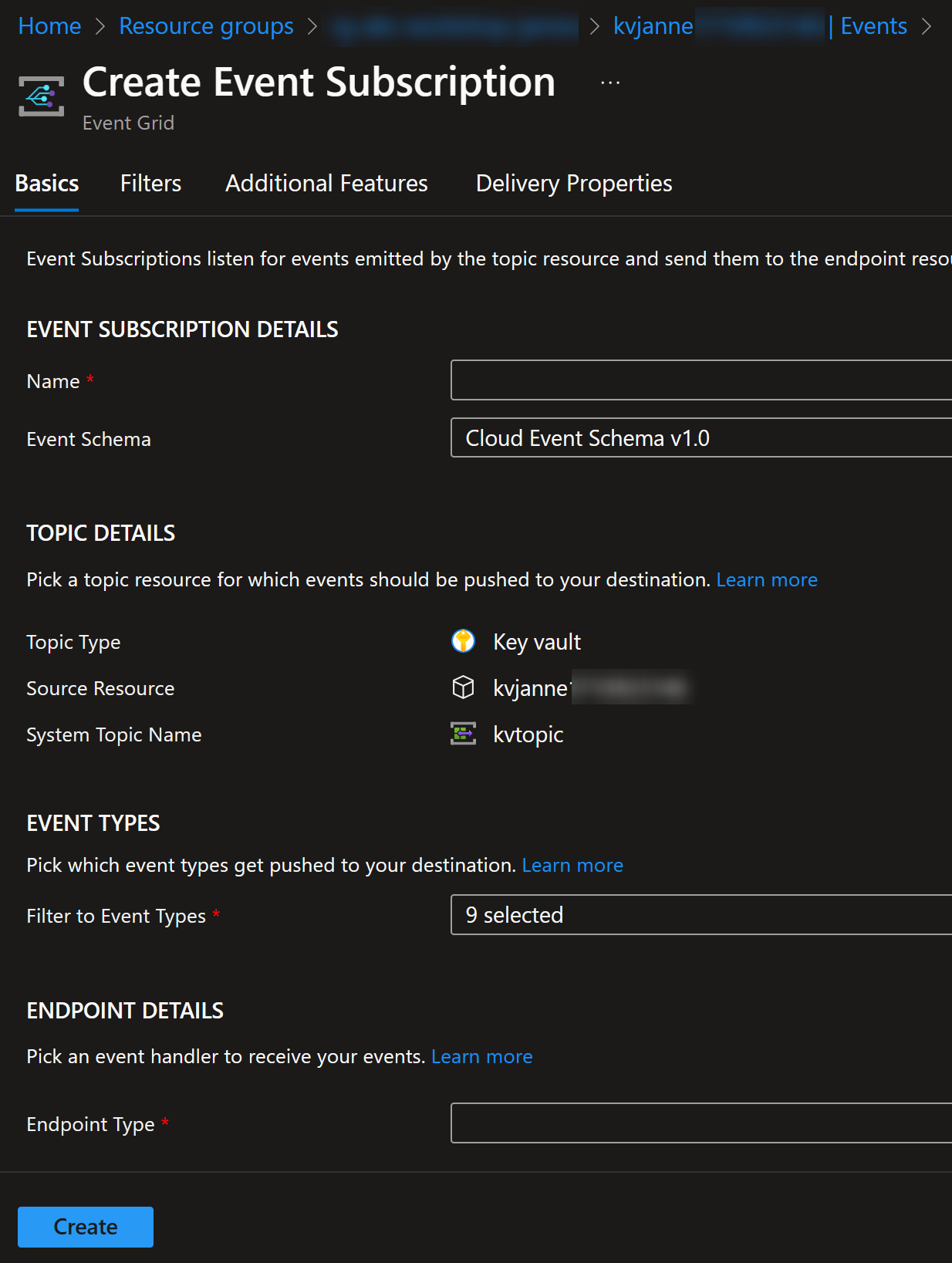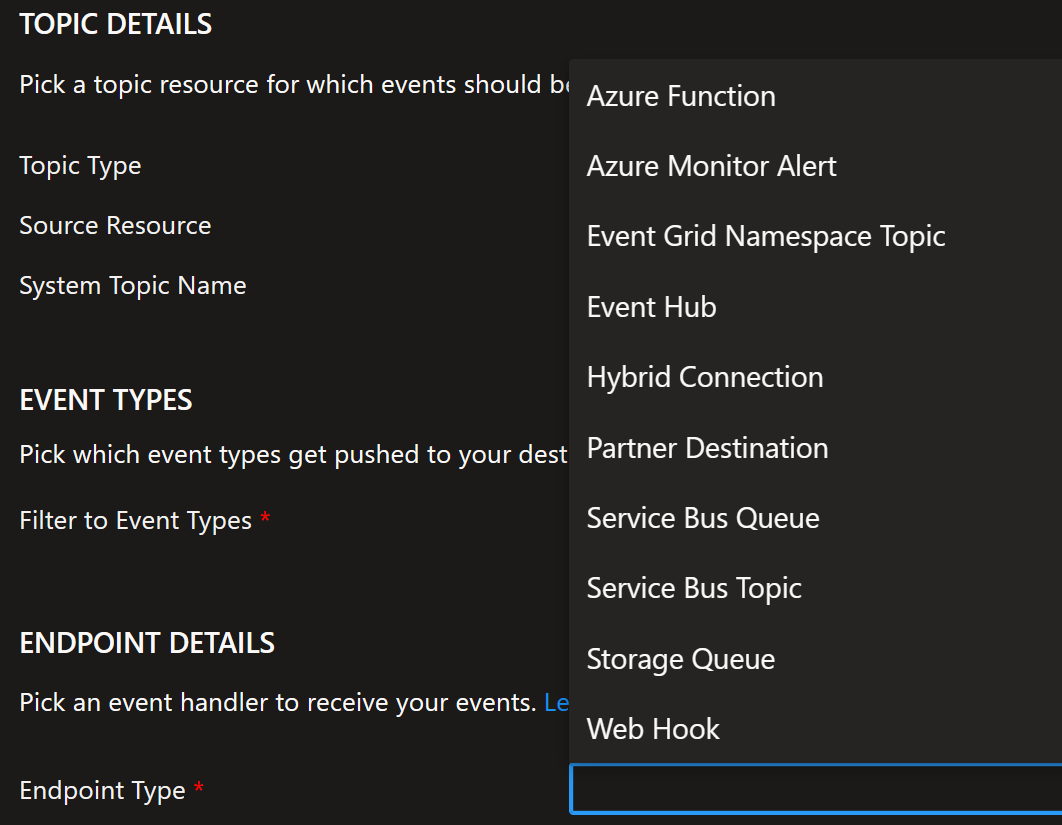Utilizing Key Vault in Azure Kubernetes Service
Posted on: April 29, 2024Azure Key Vault is an excellent service for storing your various secrets, so that you don’t have to store them in your code.
If you would have to implement Key Vault integration yourself, then very like you would have to follow this kind of pattern:
e.g., every 5 minutes
Luckily, there are many ready-made integrations available for Azure services, such as: Use Key Vault references as app settings in Azure App Service and Azure Functions. Similarly, there is a such integration for Azure Kubernetes Service (AKS) and in this post we’ll play around with it.
Azure Key Vault provider for Secrets Store CSI Driver is the key enabler for this integration. You can enable it when creating your AKS cluster or enable it later:
az aks create -g $resource_group_name -n $aks_name \
# Enable the Key Vault provider for Secrets Store CSI Driver
--enable-addons azure-keyvault-secrets-provider \
--enable-oidc-issuer \
--enable-workload-identity \
# Enable auto rotation of secrets
--enable-secret-rotation \
# Poll interval for secret rotation
--rotation-poll-interval 2m \
# ...
Couple of things to note here:
- It’s add-on for AKS, which means that it’s upgraded automatically when AKS is upgraded
- It does support polling for updates, with a configurable interval
See more information about auto-rotation in the documentation.
Let’s jump directly into the code and see how it works. I have created the following Key Vault with a secret in it:
To start using the Secrets Store CSI Driver, you need to create a SecretProviderClass:
apiVersion: secrets-store.csi.x-k8s.io/v1
kind: SecretProviderClass
metadata:
name: azure-keyvault-wi
namespace: secrets-app
spec:
provider: azure
parameters:
usePodIdentity: "false"
clientID: "${aks_keyvault_client_id}"
keyvaultName: ${keyvault_name}
objects: |
array:
- |
objectName: secret1
objectType: secret
objectVersion: ""
tenantId: "${tenant_id}"
# These are optional. If not provided, then no K8s secret will be created.
# OPTIONAL->
secretObjects:
- data:
- key: mysecret1
objectName: secret1
secretName: app-secret
type: Opaque
# <-OPTIONAL
There are plenty of details there but the main points are:
${keyvault_name}is the name of your Key Vault${aks_keyvault_client_id}is the client ID of configured identity for connecting to Key Vault
At the bottom there is secretObjects section, which is optional.
If that is provided, then the secrets are also stored as Kubernetes secrets.
Note: Details of the identity setup are in the GitHub repository linked at the end of this post. The primary point of this post is to show the delays in secret updates and not the identity setup.
Let’s first deploy the above without the optional secretObjects section.
Here is our pod deployment:
kind: Pod
apiVersion: v1
metadata:
name: busybox-secrets-store-inline-wi
namespace: secrets-app
labels:
azure.workload.identity/use: "true"
spec:
serviceAccountName: "${keyvault_service_account_name}"
containers:
- name: busybox
image: registry.k8s.io/e2e-test-images/busybox:1.29-4
command:
- "/bin/sleep"
- "10000"
volumeMounts:
- name: secrets-store
mountPath: "/mnt/secrets-store"
readOnly: true
volumes:
- name: secrets-store
csi:
driver: secrets-store.csi.k8s.io
readOnly: true
volumeAttributes:
secretProviderClass: "azure-keyvault-wi"
If we deploy this, there won’t be any Kubernetes secrets created:
$ kubectl get secret -n secrets-app
No resources found in secrets-app namespace.
Let’s check the secret inside the pod:
$ kubectl exec -it busybox-secrets-store-inline-wi -n secrets-app -- sh
/ # cat /mnt/secrets-store/secret1
This is new value
/ # watch -n 1 cat /mnt/secrets-store/secret1
In the above command, we started watching the secret file for changes:
In the background, I’ll update the secret to Key Vault.
After a while, the secret is updated in the pod:
It takes at maximum the rotation-poll-interval time to update the secret in the pod.
So, you should get that value reflected in less than 2-minute (which is the default rotation poll interval).
You can also see this from the Key Vault audit logs:
Follow-up question is: What if you deploy second pod… will you have twice as much SecretGet operations? 🤔
As you can see, the answer is yes since you can see two different 2-minute intervals in the logs.
For our second test, let’s deploy the above SecretProviderClass with the secretObjects section.
Here is our updated pod deployment:
kind: Pod
apiVersion: v1
metadata:
name: busybox-secrets-store-inline-wi
namespace: secrets-app
labels:
azure.workload.identity/use: "true"
spec:
serviceAccountName: "${keyvault_service_account_name}"
containers:
- name: busybox
image: registry.k8s.io/e2e-test-images/busybox:1.29-4
command:
- "/bin/sleep"
- "10000"
volumeMounts:
- name: secrets-store
mountPath: "/mnt/secrets-store"
readOnly: true
- name: secret-volume
mountPath: "/mnt/secrets-volume"
readOnly: true
volumes:
- name: secrets-store
csi:
driver: secrets-store.csi.k8s.io
readOnly: true
volumeAttributes:
secretProviderClass: "azure-keyvault-wi"
- name: secret-volume
secret:
secretName: app-secret
Notice the new secret-volume volume mount, which is using Kubernetes secret created by our deployed SecretProviderClass.
If we now check the secrets:
$ kubectl get secret -n secrets-app
NAME READY STATUS RESTARTS AGE
busybox-secrets-store-inline-wi 1/1 Running 0 66s
Indeed, the secret is created as we expected. Now, let’s check those two secrets inside the pod:
$ kubectl exec -it busybox-secrets-store-inline-wi -n secrets-app -- sh
/ # cat /mnt/secrets-store/secret1
Even newer value
/ # cat /mnt/secrets-volume/mysecret1
Even newer value
Both values match as expected. Let’s start the watch for those two files:
/ # watch -n 1 cat /mnt/secrets-store/secret1 /mnt/secrets-volume/mysecret1
Watching the files:
After updating the secret in Key Vault, the secret store specific file is updated:
And the Kubernetes secret is updated after that:
But as you can see, in the above test, the time difference between these two updates was ~1 minute.
The above can be illustrated using the following diagram:
Click diagram to view in fullscreen
From Kubernetes Secrets documentation:
As a result, the total delay from the moment when the Secret is updated to the moment when new keys are projected to the Pod can be as long as the kubelet sync period + cache propagation delay
There is a good blog post do describe this in more detail: Why Kubernetes secrets take so long to update?
Your responsibility
In the above tests, we were focusing on how the AKS fetches the secrets from the Key Vault and they landed into volumes as files.
After that it’s up to the application to take responsibility:
The application needs to watch for the file changes from the volume mounted by the CSI driver and update itself accordingly.
The follow-up questions are:
- Did you plan this in your application?
- Are you using environment variables for managing your variables and secrets?
- Does your application framework support this kind of dynamic updates to configuration files?
Environment variables are tricky in the sense that they don’t update while the process is running and then you need to resort to some kind of trick to update them e.g., Reloader.
Btw… there is also interesting discussion about “Don’t rely on pod creation to mount to Kubernetes secrets” in the following GitHub issue:
Alternative solution: Key Vault events
Alternatively, you can use Key Vault events to trigger updates to your application:
Setting them up can be done from the Azure Portal:
In event subscription, you can choose the schema and event types that you’re interested in:
There are multiple options for the endpoint:
To use webhooks, you need to have a service that listens for the events. I have created a simple echo service for this purpose and it’s available on Docker Hub:
If you want to implement your own webhook service, then you can use the following code as a starting point:
Key Vault updates the webhook right after the secret is updated:
You can see the update reflected on the right-hand side tab in the browser showing Echo: 1 after the secret is updated.
Here is an example of the event in CloudEvents format that is sent to the webhook:
{
"id": "0a09caf8-8056-4a4b-9de4-4452cf7ad05b",
"source": "/subscriptions/0afdd038-221b-4938-8564-5c62d1399393/resourceGroups/rg-aks/providers/Microsoft.KeyVault/vaults/kvjanne1234567890",
"specversion": "1.0",
"type": "Microsoft.KeyVault.SecretNewVersionCreated",
"subject": "secret1",
"time": "2024-04-01T16:21:21.2932321Z",
"data": {
"Id": "https://kvjanne1234567890.vault.azure.net/secrets/secret1/0c7751761b5a4ca09f3deec5fba4af83",
"VaultName": "kvjanne1234567890",
"ObjectType": "Secret",
"ObjectName": "secret1",
"Version": "0c7751761b5a4ca09f3deec5fba4af83",
"NBF": null,
"EXP": null
}
}
Here are additional resources to get you started:
Webhooks, Automation runbooks, Logic Apps as event handlers for Azure Event Grid events
Azure Key Vault as Event Grid source
Monitoring Key Vault with Azure Event Grid
Implementing this kind of solution is of course more complex and you need to roll up your sleeves and start coding to get it implemented.
Conclusion
In this post, we saw how to utilize Azure Key Vault in Azure Kubernetes Service. We also saw that updates are not instant, and you need to understand how the system works.
The longer version of the code is available in the GitHub repository:
I hope you find this useful!
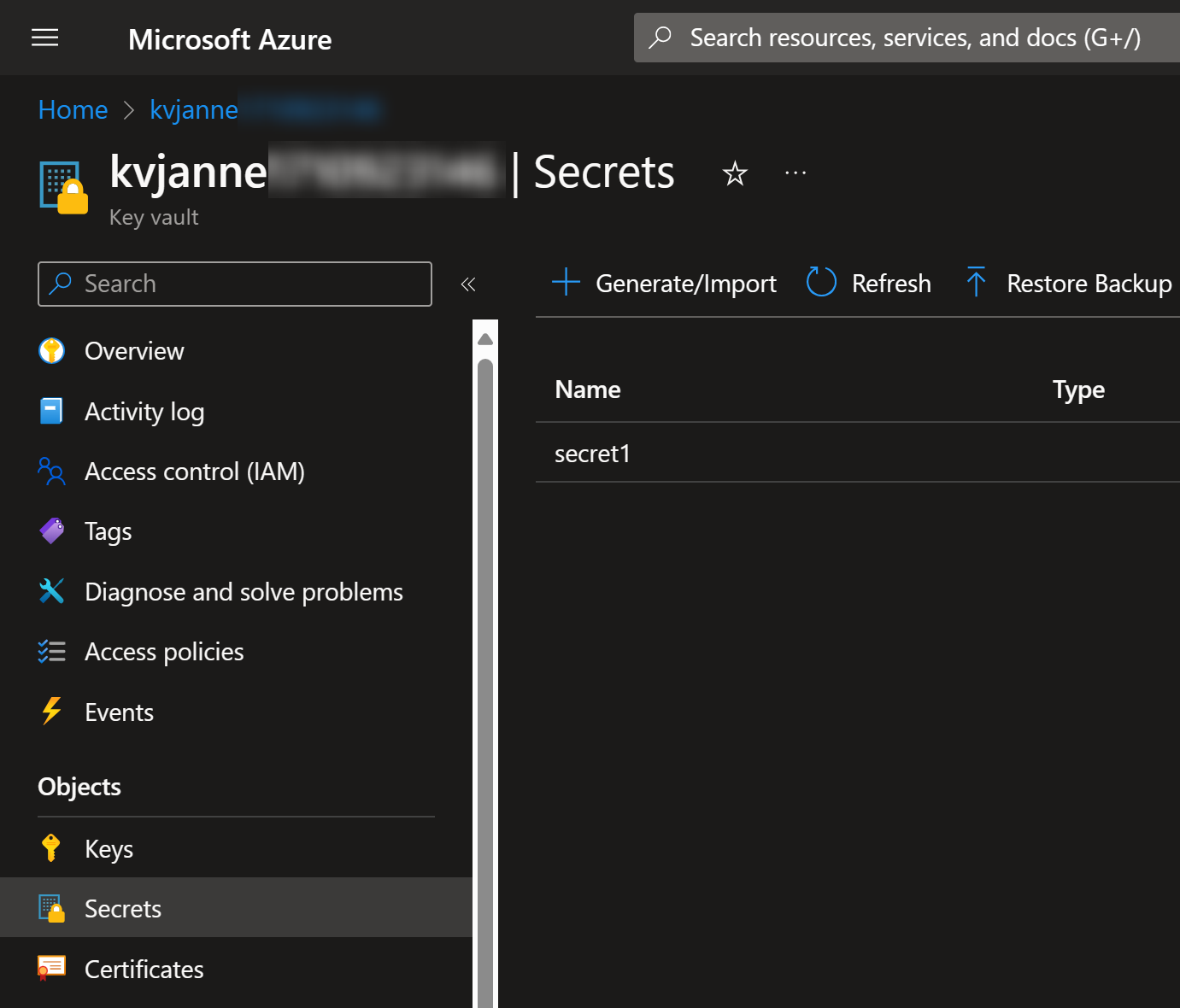


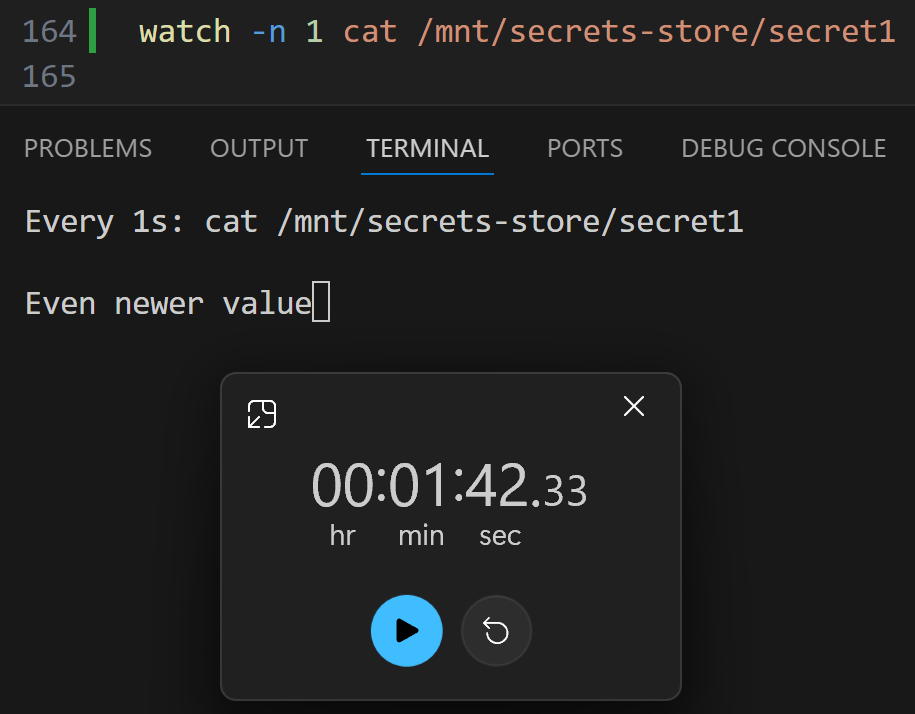

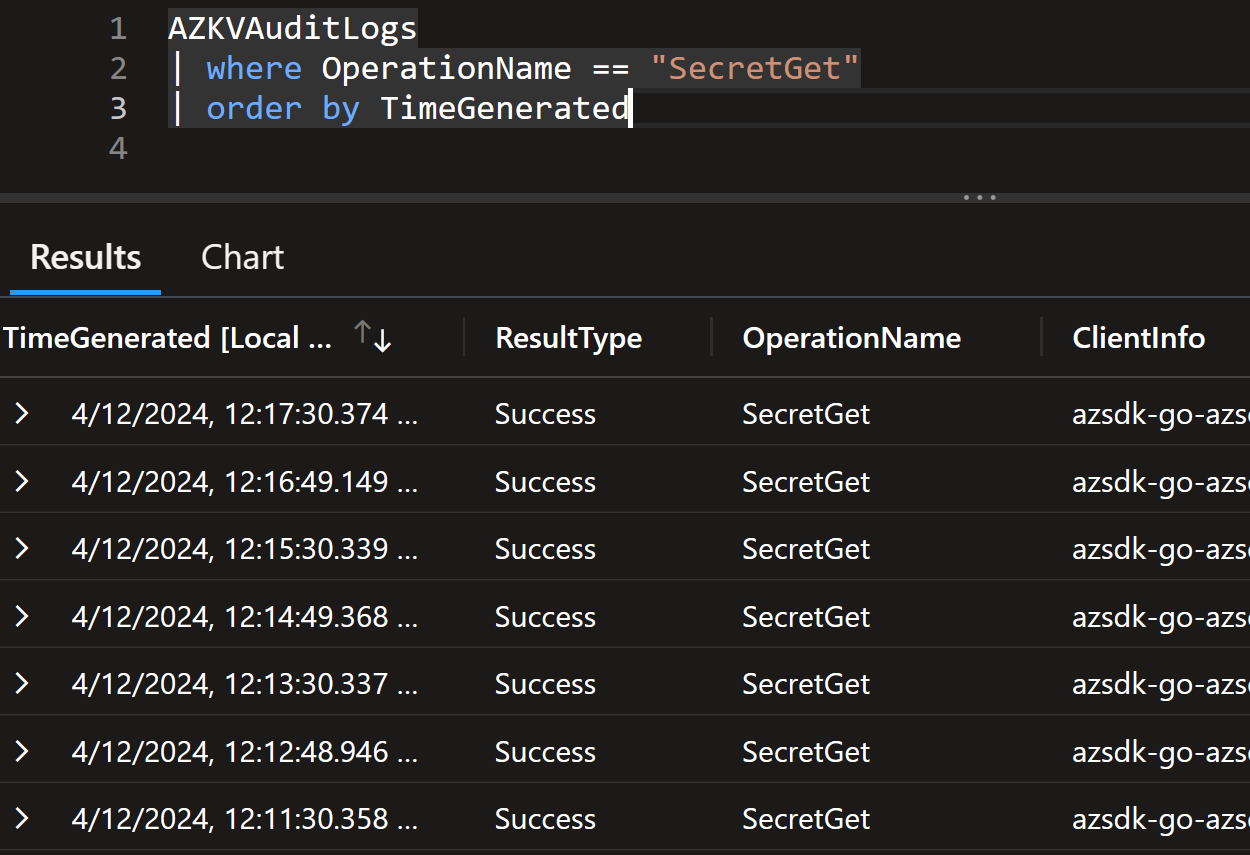

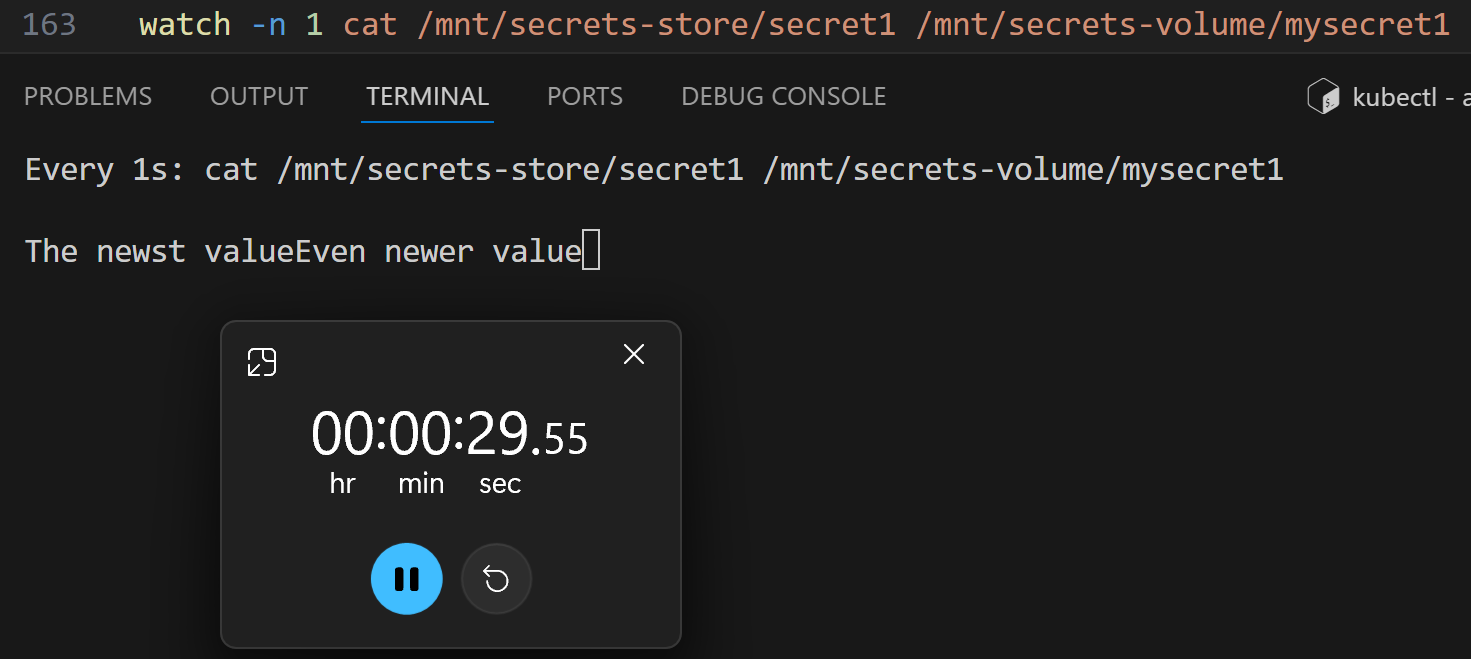

 kubernetes-sigs/secrets-store-csi-driver/issues/298
kubernetes-sigs/secrets-store-csi-driver/issues/298

